Mark Anthony Neal's Blog, page 208
June 17, 2021
'Black Girl Songbook' – Chapter 11: Black Cover Girls Feat. Karyn White
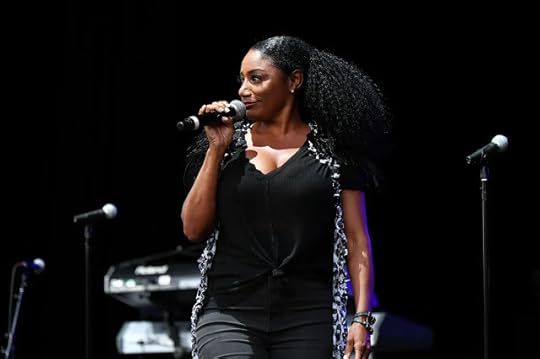
'On this episode of Black Girl Songbook, host Danyel Smith looks at the songs that are so nice they were recorded twice! From tracks like “I’m Going Down” to “Killing Me Softly,” she examines what makes timeless songs desirable covers. Later on, she speaks with Grammy nominee Karyn White about her anthem “Superwoman”.'
Death By Incarceration - Episode One: Art & Mass Incarceration with Nicole Fleetwood

'Hosts David "Suave" Gonzalez and Kevin McCracken speak with Dr. Nicole Fleetwood, Professor of American Studies and Art at Rutgers University. Topics include mass incarceration, the system disappearing people, abolition, and of course her award winning book Marking Time: Art in the Era of Mass Incarceration. Death By Incarceration is a show about life behind bars. The USA is the only nation where a minor can be sentenced to die by incarceration before turning 18. A minor can’t vote, can’t serve in the military, can’t drink or smoke, but they can go to prison for the rest of their lives.'
June 16, 2021
Lack of Broadband Internet Creating Divide in America

'High speed broadband internet needed for video conferencing has always been hard to get in rural America because companies make less money connecting remote communities rather than cities. Internet is a public utility in Wilson, North Carolina, but that isn’t an option in other rural areas as they struggle with slow and spotty service.' -- NBC News
A Taste Of Freedom
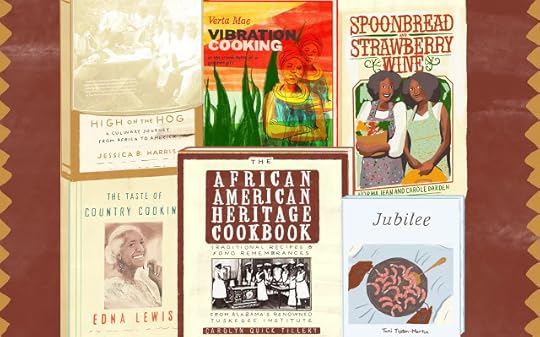
'Juneteenth commemorates the day that enslaved Texans found out — more than two years after Emancipation Day — that they were free. It's also a day known for celebratory meals and red drinks. But as the holiday becomes more widespread, Code Switch wondered: Is there a risk that certain people (and corporations) will try to keep the food and lose the history?'
In Conversation: Jewelle Gomez, April Bey, and María Elena Ortiz
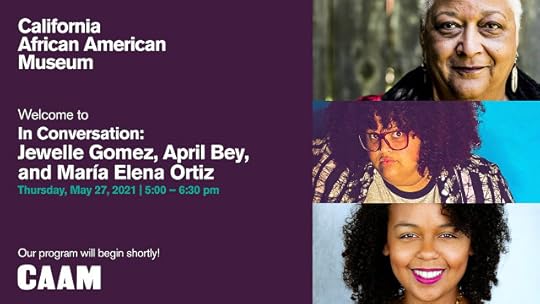
'In "Atlantica, The Gilda Region," April Bey’s first solo museum exhibition in Los Angeles, the Bahamian-American artist positions herself as an alien from the planet Atlantica whose mission on Earth is to observe and report as an undercover agent. Bey’s mythological realm is inspired in part by author Jewelle Gomez’s Lambda Award-winning novel "The Gilda Stories." In this conversation moderated by María Elena Ortiz, Curator at the Pérez Art Museum Miami, Bey and Gomez discuss the theoretical and artistic foundations of the worlds they have created.' -- California African American Museum
Where We Come From: An Immigrant Family Navigates Generational Trauma
 "My father was very well educated. So he wanted the same for his children. He wanted us to be successful. But we left the diaspora, you know, we left what now I see was our comfort zone — moving from an all-Black neighborhood into an all-white neighborhood. And we later came to find out that it was not going to be an easy road for our family." -- Colette Baptiste-Mombo
"My father was very well educated. So he wanted the same for his children. He wanted us to be successful. But we left the diaspora, you know, we left what now I see was our comfort zone — moving from an all-Black neighborhood into an all-white neighborhood. And we later came to find out that it was not going to be an easy road for our family." -- Colette Baptiste-Mombo
Amythyst Kiah - Black Myself (Official Music Video)

“Kwaku Otchere's artistic eye and ability to create such powerful visuals while simultaneously keeping everyone on set safe amid the pandemic is truly remarkable. Adding the talents of choreographer Aysha Upchurch and dancer Des Polk allowed this project to flourish even further. The four of us helped realize the vision of this video by incorporating our individual experiences of being black in America.” - Amythyst Kiah
Invisible Blackness – When Art Becomes Your Ethnicity, An Interview with Jeff Chang
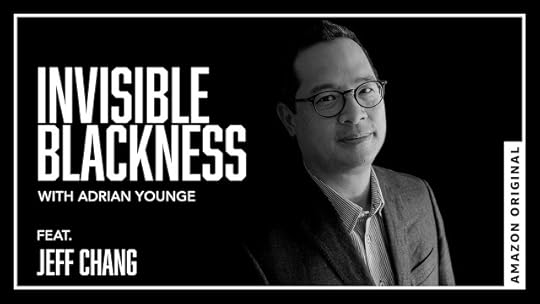
'Jeff Chang is a renowned historian, journalist, professor (Stanford University) and critic on the music, culture and politics of hip hop. His books, Can't Stop Won't Stop, Who We Be, and We Gon' Be Alright have become acclaimed assets to the analysis and understanding of the culture. On this episode, host Adrian Younge and Jeff discuss hip hop's evolution from its community roots to its worldwide phenomena.'
June 15, 2021
We Invented Swag: The Lens of Jamel Shabazz by Mark Anthony Neal
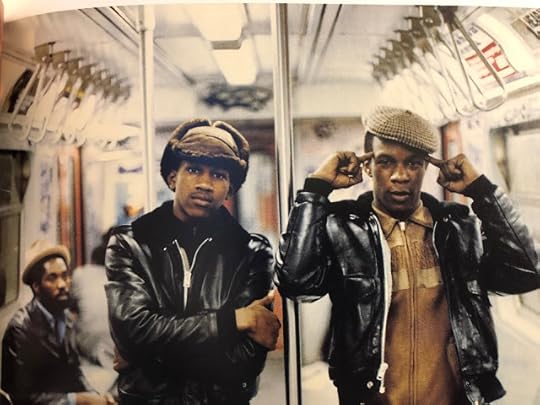
We Invented Swag: The Lens of Jamel Shabazz
by Mark Anthony Neal | @NewBlackMan | NewBlackMan (in Exile)
Obviously the subjects of Jamel Shabazz’s groundbreaking collection Back in the Days didn’t create swag; an Afro-disaporic style of expression that we can surely witness in the figures of Jack Jonson and Bessie Smith in the early 20th century, as surely as some alpha male was crip walking across a plantation field at night generations earlier. Yet the photographs that comprise Back in the Days, capture a generation of African-Americans, Afro-Caribbeans and Afro-Latinx full of aspiration and brimming with self-confidence, at the dawning of the Reagan era and at a time when hip-hop was just a funny-sounding phrase and no one had yet to coin the term “ghetto fabulous.” Two decades after its initial publication, Shabazz’s classic collection still forces us again to consider the genius, ingenuity and aspirational powers that everyday youth cultivated in those first moments of hip-hop.
Born in 1960, Jamel Shabazz is the embodiment of the post-Soul generation, a cadre of Black Americans who came of age between and betwixt the watershed moments of the Civil Rights struggles and the full blown commercial exposure of hip-hop culture. No doubt influenced by the iconic photography that captured nearly every important moment in the drive towards desegregation and voting rights in the 1960s—was it documentation or surveillance, if we consider the career of Ernest Withers—Shabazz picked up a camera as a 15-year-old in 1975.
As Shabazz explained in an interview I conducted with him two decades ago, “We always had cameras laying around the house, so I would just take these instamatic cameras up to my school and just photograph a lot of my peers.” More specifically Shabazz was inspired by a friend of his, who was in a local gang, noting that “I would go to his home and look at his photo albums of these gangsters and…want(ed) to shoot young people in that type of situation, with the fly gear on and the strong poses.”
Shot primarily in Brooklyn, with the early photographs taken in 1979, Back in the Days is a visual time capsule of infamous places and spaces like the Albee Square Mall (immortalized by Biz Markie), various Brooklyn subway lines and the Fulton Street Mall, (with landmarks like the flagship Abraham & Strauss department store, then Brooklyn’s alternative to Herald Square) which developers destroyed to make Brooklyn more accommodating to a growing middle class in the borough.
The folk featured in Back in the Days were not trying make any representational claims other than this is who they were on their way to and from school and when they hung out with friends.. Shabazz was not trying to make any grand artistic gestures either: “I was just trying to record my history. I never looked down the road in terms of recording a time, I just recorded my personal life. And I wanted to record the images of people, a document of people I engaged in conversation with. It’s like a visual diary.”
It was only when Shabazz began to start pulling together what would eventually become Back in the Days, that he began to think more seriously about the significance of the era. The book was initially titled, Back in the Days: A Time Before Crack, as Shabazz explains, “my pictures illustrate how life was before the crack epidemic hit and took a lot of the innocence away. A lot of people in the book have passed away, some of them have been murdered by individuals in some of the same pictures. But back in the 1970s and 1980s, we as a people were getting it together…and then the crack came. And with the crack came the liquid cocaine in the form of the 40 ounce beer. The guns came into the community and that whole innocence was lost.”
That sense of innocence that Shabazz talks about is even more profound now, as these early moments of hip-hop are continuously remixed and exploited, often for the benefit of corporations and media companies that have no interests in the communities that Shabazz so beautifully captured—and where many continue to struggle.
The ultimate genius of Shabazz’s work is that he used the impulse to simply capture the world around him and in the process shone a bright light on the ability of young people to make beauty out of their everyday lives. Swag indeed.
@font-face {font-family:Helvetica; panose-1:0 0 0 0 0 0 0 0 0 0; mso-font-charset:0; mso-generic-font-family:auto; mso-font-pitch:variable; mso-font-signature:-536870145 1342208091 0 0 415 0;}@font-face {font-family:"Cambria Math"; panose-1:2 4 5 3 5 4 6 3 2 4; mso-font-charset:0; mso-generic-font-family:roman; mso-font-pitch:variable; mso-font-signature:3 0 0 0 1 0;}@font-face {font-family:Calibri; panose-1:2 15 5 2 2 2 4 3 2 4; mso-font-charset:0; mso-generic-font-family:swiss; mso-font-pitch:variable; mso-font-signature:-536859905 -1073732485 9 0 511 0;}p.MsoNormal, li.MsoNormal, div.MsoNormal {mso-style-unhide:no; mso-style-qformat:yes; mso-style-parent:""; margin:0in; margin-bottom:.0001pt; mso-pagination:widow-orphan; font-size:12.0pt; font-family:"Calibri",sans-serif; mso-ascii-font-family:Calibri; mso-ascii-theme-font:minor-latin; mso-fareast-font-family:Calibri; mso-fareast-theme-font:minor-latin; mso-hansi-font-family:Calibri; mso-hansi-theme-font:minor-latin; mso-bidi-font-family:"Times New Roman"; mso-bidi-theme-font:minor-bidi;}.MsoChpDefault {mso-style-type:export-only; mso-default-props:yes; font-family:"Calibri",sans-serif; mso-ascii-font-family:Calibri; mso-ascii-theme-font:minor-latin; mso-fareast-font-family:Calibri; mso-fareast-theme-font:minor-latin; mso-hansi-font-family:Calibri; mso-hansi-theme-font:minor-latin; mso-bidi-font-family:"Times New Roman"; mso-bidi-theme-font:minor-bidi;}div.WordSection1 {page:WordSection1;}Why Major Cities Are Experimenting with Guaranteed Income for Artists
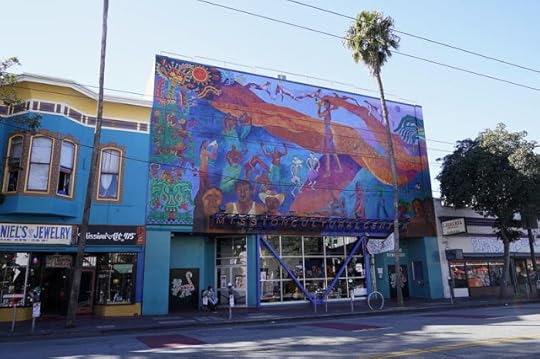
'St. Paul, Minnesota and San Francisco, California have rolled out guaranteed minimum income programs for artists that give out monthly, no strings attached payments. Both programs primarily were intended to support artists of color. In St. Paul, the non-profit Springboard for the Arts partnered earlier this year with city government to deliver monthly payments to 25 local artists. To learn more about that program, The Takeaway spoke with Caroline Taiwo, the Economic Opportunity Director for Springboard for the Arts.
Meanwhile, San Francisco began delivering monthly payments to 130 local artists last month. But while the program was intended to support marginalized artists, many local arts organizations centered around people of color say the roll out has been rushed and poorly executed. To learn more about why some members of the community are speaking out against the program, The Takeaway with guest host Melissa Harris Perry spoke with T. Kebo Drew, managing director of the Queer Women of Color Media Arts Project, based in San Francisco.'
Mark Anthony Neal's Blog
- Mark Anthony Neal's profile
- 30 followers



